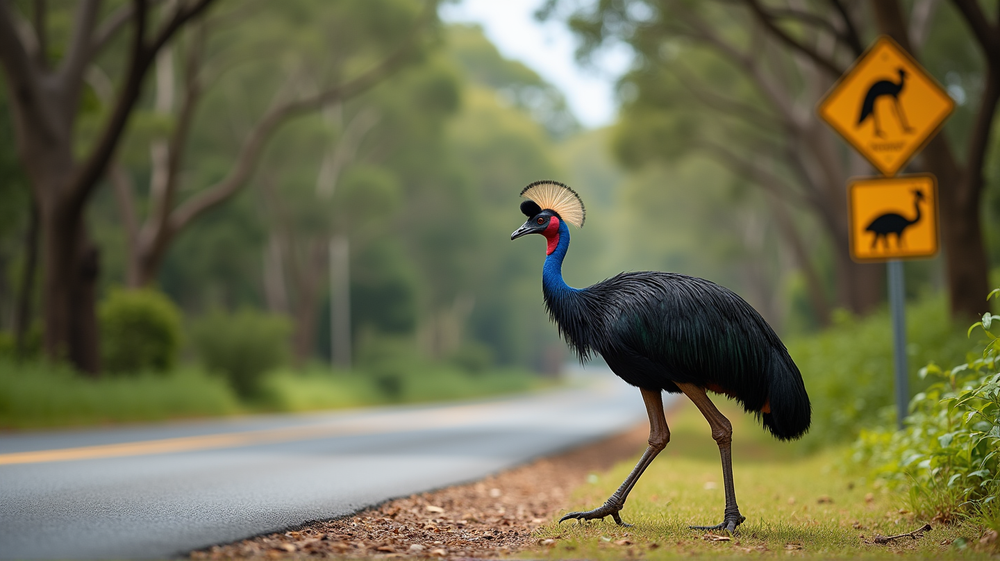Breakthrough AI Technology Reduces Animal-Vehicle Collisions in Australia
Australia is making strides in wildlife protection with the successful development and testing of a pioneering AI technology, designed to prevent animal-vehicle collisions on the roads of regional areas. In a promising field trial in Far North Queensland, this system demonstrated remarkable results by significantly reducing collisions with the endangered cassowary.
The Genesis of a Game-Changing System
Developed through a collaborative effort between the University of Sydney, QUT, and the Queensland government, the Large Animal Activated Roadside Monitoring and Alert system, or LAARMA, is a sophisticated, low-cost solution designed to save lives—both human and animal. It uses a suite of advanced sensors, including RGB cameras, thermal imaging, and LiDAR, to detect animals near the roads. When a detection occurs, nearby warning signs alert drivers, effectively encouraging speed reduction.
Exceptional Precision in Detection
The trial brought to light the system’s impressive capability: detecting cassowaries with a 97% accuracy rate and recording over 280 sightings. The technology not only identifies but evolves—continuously learning to improve its detection abilities, which were honed to 78.5% accuracy by the trial’s conclusion. According to Design and Development Today, these adaptive features mark a significant leap in autonomous wildlife protection.
A Seamless Blend of Behavioral Science and AI
To maximize the system’s efficacy, researchers utilized behavioral science methods to craft impactful roadside messages. These tailored warnings have proven to effect tangible changes in driver behavior, leading to a reduction in vehicle speeds by up to 6.3 km/h in warning zones—a critical factor in collision mitigation.
Significance and Global Reach
The success of this initiative extends beyond local impact, as the project’s code will be made globally available for public use on GitHub. This opens the door for conservationists worldwide to develop similar systems to protect various at-risk species, such as the red panda and the snow leopard.
A Dual Benefit: Saving Wildlife and Enhancing Road Safety
The dual advantage of LAARMA is profound: it preserves the endangered cassowary while safeguarding motorists. As noted by Professor Ioni Lewis, the initiative doesn’t just prevent accidents; it fosters an essential awareness among drivers, ensuring better harmony between humans and wildlife.
With a staggering 174 cassowary deaths since 1996, this innovative approach provides a hopeful future for reducing these tragedies. The successful results underline the potential for such technology not only in Australia but around the world, offering a blueprint for how AI can help harmonize human infrastructure with natural ecosystems.




